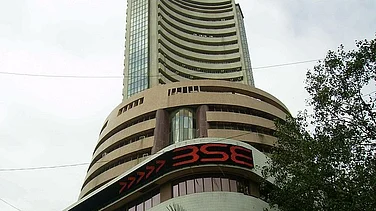Brokerages have turned cautious on Bajaj Finance, even as the country’s largest non-bank lender posted steady earnings for the June quarter. Despite double-digit growth in profit and assets under management (AUM), analysts flagged emerging stress in select loan segments and warned of potential pressure on the lender’s earnings trajectory in the near term.
Likewise, shares of Bajaj Finance also came under pressure in trade on July 25, slumping 6%.
For the quarter gone by, Bajaj Finance reported a 22% year-on-year rise in consolidated net profit to ₹4,765 crore, up from ₹3,912 crore in the same period last year. The strong showing was driven by healthy loan growth and steady credit demand. Consolidated revenue grew 21% to ₹19,524 crore, while net interest income (NII) rose 22% to ₹10,227 crore. Net total income stood at ₹12,610 crore, up 21% year-on-year.
AUM expanded 25% on-year to ₹4.42 lakh crore as of June-end, compared with ₹3.54 lakh crore in the year-ago quarter.
Yet, the upbeat numbers did little to ease concerns among analysts, who flagged rising stress in the MSME, two-wheeler, and three-wheeler loan portfolios. Several expect growth to moderate and credit costs to inch higher, tempering optimism about near-term performance.
JP Morgan downgraded the stock to ‘neutral’ from ‘overweight’, citing concerns around asset quality that could delay any meaningful re-rating. The brokerage also expects the Street to revise earnings estimates downward for both FY25 and FY26.
In its post-earnings call, Bajaj Finance’s management also acknowledged continued stress in the MSME and vehicle finance segments. It also guided for relatively slower AUM growth of 23–25% for the current fiscal year, weaker than its historical trend.
UBS retained its ‘sell’ rating with a target price of ₹750, pointing to lingering pressure in the MSME segment. Macquarie, too, maintained an ‘underperform’ rating with a target of ₹800, noting that current valuations already factor in the company’s AUM growth guidance. Both brokerages flagged a potential uptick in credit costs if the underlying stress pool expands.
Goldman Sachs, which has a ‘neutral’ rating and a price target of ₹969, highlighted a 160-basis-point sequential drop in the provision coverage ratio , a concern in light of persistent overleveraging among some borrower segments.
Bernstein echoed the cautious stance, retaining its ‘underperform’ call with a lower target of ₹640. The firm warned of mounting profitability pressures as loan spreads narrow and levers to protect margins appear limited.
CLSA, however, struck a more constructive opinion, maintaining its ‘outperform’ rating with a target of ₹1,150. While it acknowledged the challenges in the quarter, it also commended Bajaj Finance’s performance given the broader softness in retail credit. CLSA expects the company’s profit after tax to grow at a 25% CAGR between FY26 and FY28.
Despite the strong Q1 print, Bajaj Finance’s near-term outlook appears more clouded, with analysts divided on whether the company can sustain its growth momentum amid asset quality risks. For now, the consensus is clear: the next leg of performance will be much more gradual.





























